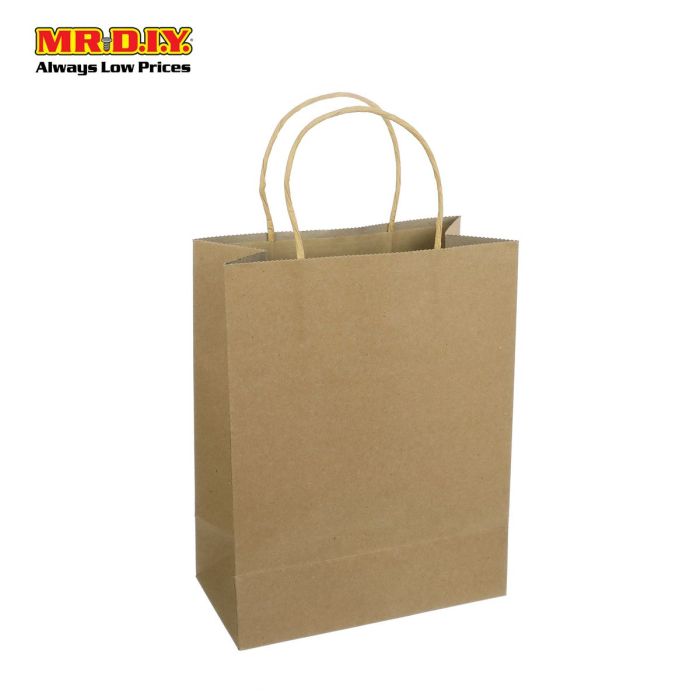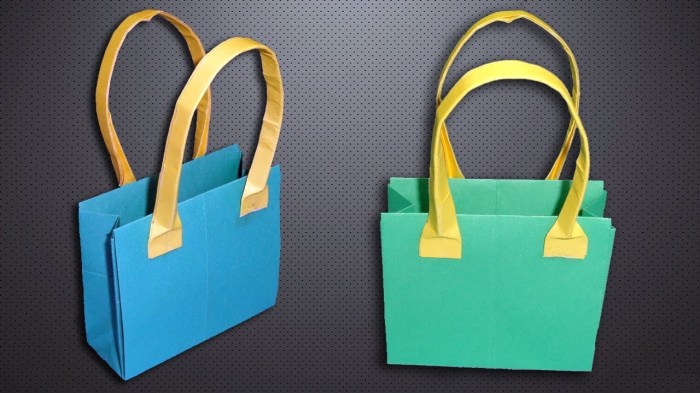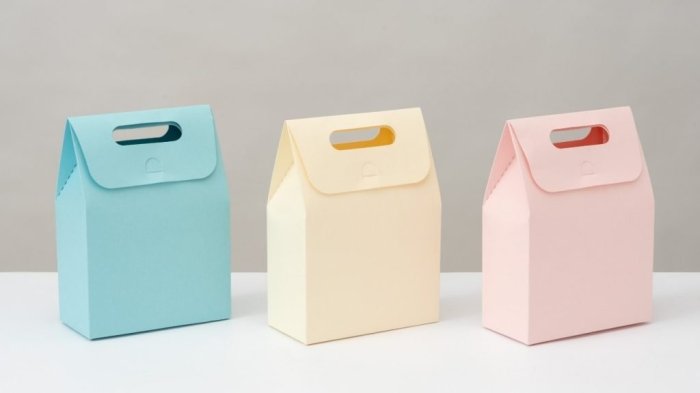DIY paper bags offer a sustainable and creative way to personalize everyday life. From carrying groceries to wrapping gifts, these eco-friendly alternatives reduce waste and add a touch of handmade charm. The appeal of DIY paper bags lies in their versatility, allowing you to create unique designs for any occasion.
This guide explores the steps involved in crafting your own paper bags, from gathering essential materials to adding personalized touches. We’ll delve into different paper bag variations, explore practical applications, and discuss safety considerations for a safe and enjoyable crafting experience.
The Appeal of DIY Paper Bags

Crafting your own paper bags has gained popularity in recent years, driven by a growing awareness of environmental concerns and a desire for personalized touches. This trend allows individuals to express their creativity while contributing to a more sustainable lifestyle.
Environmental Benefits, Diy paper bag
Creating your own paper bags offers a tangible way to reduce reliance on disposable plastic bags, which often end up polluting landfills and harming wildlife. Reusable paper bags, made from recycled materials, can be used multiple times, reducing waste and minimizing environmental impact. Additionally, by choosing to craft your own bags, you can control the materials used, opting for eco-friendly options like recycled paper or compostable alternatives.
Creative Potential
DIY paper bags offer a blank canvas for personalized expressions. You can customize them with unique designs, patterns, and colors to suit different occasions. For birthdays, decorate them with festive themes and personalized messages. For special events, create elegant bags with intricate designs and embellishments. The possibilities are endless, allowing you to create truly unique and memorable gifts.
Essential Materials and Tools

Crafting your own paper bags is a fun and rewarding project that allows you to personalize your packaging. The process involves a few basic materials and tools, most of which you likely already have around the house.
This section will guide you through the essential materials and tools needed for your paper bag crafting journey. We’ll explore each item’s purpose and how it contributes to the overall process.
Paper
Paper is the foundation of your paper bag creation. The type of paper you choose will significantly influence the bag’s durability, appearance, and overall feel.
- Brown Kraft Paper: This is a classic choice for paper bags due to its strength and natural aesthetic. It’s commonly used for grocery bags and is readily available at craft stores and online retailers.
- Cardstock: If you’re looking for a more rigid and durable bag, cardstock is an excellent option. It’s thicker than regular paper and offers a smooth surface for printing or decorating.
- Construction Paper: For lighter-duty bags, construction paper is a colorful and versatile choice. It’s available in a wide array of colors and textures, allowing you to create unique and eye-catching designs.
- Specialty Papers: Explore patterned papers, scrapbook paper, or even wallpaper for a more decorative and personalized touch.
Scissors
Scissors are crucial for cutting your paper to the desired size and shape. Choose a pair of sharp scissors that are comfortable to hold and provide precise cuts.
- Fabric Scissors: These scissors are designed for cutting fabric, but they can also handle thick paper. They feature sharp blades and a comfortable grip.
- Paper Scissors: Standard paper scissors are ideal for general cutting tasks. They’re typically less expensive than fabric scissors but still provide sharp and precise cuts.
Ruler
A ruler is essential for accurate measurements, ensuring that your paper bag is the desired size and shape. Choose a ruler that is long enough for your project and has clear markings.
Pencil or Pen
A pencil or pen is needed for marking your paper and creating guidelines for cutting and folding. Use a pencil for light markings that can be easily erased if needed.
Glue Stick or Tape
Glue stick or tape is used to secure the seams of your paper bag. Glue stick is a good option for clean and smooth seams, while tape provides a quick and secure bond.
Optional Tools
While not essential, these tools can enhance your paper bag crafting experience:
- Craft Knife: A craft knife is helpful for making precise cuts and creating intricate designs.
- Paper Punch: A paper punch can be used to create decorative holes or embellishments on your paper bag.
- Stapler: A stapler can be used to reinforce the seams of your paper bag, especially if you’re using thin paper.
- Hole Punch: A hole punch is useful for adding handles to your paper bag.
- Embellishments: Get creative with ribbons, stickers, stamps, or other embellishments to add a personal touch to your paper bags.
Adding Personal Touches: Diy Paper Bag

Paper bags offer a blank canvas for your creativity, allowing you to transform them into unique and personalized items. By adding your own designs, embellishments, and artistic flair, you can elevate your DIY paper bags from simple containers to cherished keepsakes.
Designing Unique Patterns and Illustrations
Creating custom patterns and illustrations is a fantastic way to personalize your paper bags. You can draw inspiration from your interests, hobbies, or even the occasion for which you’re making the bags.
- Geometric Patterns: Simple geometric shapes like triangles, squares, and circles can be arranged in various combinations to create eye-catching patterns. Experiment with different colors and sizes to achieve a desired look.
- Floral Motifs: Flowers are a timeless and versatile design element. Draw or trace simple floral patterns, or use stencils to create intricate designs.
- Abstract Art: Embrace your artistic side by creating abstract designs with bold colors, lines, and shapes. This approach allows for a unique and expressive style.
Decorating with Paint, Markers, Stamps, and Stencils
Paint, markers, stamps, and stencils provide a variety of options for adding color and detail to your paper bags.
- Acrylic Paint: Acrylic paint offers vibrant colors and dries quickly, making it suitable for paper bags. Use brushes or sponges to apply the paint, and experiment with different techniques like layering or splattering.
- Markers: Markers come in various colors and tip sizes, allowing for precise lines and intricate details. Consider using permanent markers for lasting results.
- Stamps: Rubber stamps offer a convenient way to create repetitive patterns or designs. Use ink pads in various colors to add a pop of color.
- Stencils: Stencils provide a way to create clean and precise designs. Place the stencil on the paper bag and use paint, markers, or even sponges to apply the design.
Embellishing with Ribbons, Buttons, and Fabric Scraps
Ribbons, buttons, and fabric scraps can add a touch of texture and dimension to your paper bags.
- Ribbons: Ribbons can be used to create bows, ties, or decorative accents. Choose ribbons in colors and patterns that complement your bag’s design.
- Buttons: Buttons can be sewn or glued onto the bag to create unique patterns or add a pop of color. Use buttons in different shapes, sizes, and colors to create a personalized look.
- Fabric Scraps: Fabric scraps can be sewn or glued onto the bag to create textured accents or add a touch of whimsy. Consider using fabric scraps in contrasting colors or patterns.
Sustainable Alternatives
Creating paper bags with a focus on sustainability is a great way to reduce your environmental impact. Choosing eco-friendly materials and practices can make your DIY paper bag project both stylish and responsible.
Using Recycled Paper
Recycled paper is a fantastic option for crafting paper bags. It reduces the need for virgin pulp, which significantly lowers the environmental footprint of your project. Look for recycled paper that is certified by organizations like the Forest Stewardship Council (FSC) to ensure it comes from responsibly managed forests.
Alternative Materials
Beyond recycled paper, explore other sustainable materials for your paper bags. Consider using:
- Kraft paper: A sturdy and natural option often made from recycled fibers.
- Brown paper bags: These readily available bags can be repurposed for crafting.
- Fabric scraps: Upcycle leftover fabric into reusable shopping bags or gift bags.
- Newspaper: Although not as durable, newspaper can be used for decorative projects or wrapping gifts.
Eco-Friendly Dyeing and Printing
When customizing your paper bags, opt for eco-friendly dyeing and printing techniques. Natural dyes derived from plants and minerals offer a sustainable alternative to synthetic dyes. Consider using:
- Plant-based dyes: Experiment with dyes made from turmeric, beetroot, or indigo for vibrant colors.
- Natural pigments: Use clay, charcoal, or coffee grounds to create unique patterns and shades.
- Eco-friendly printing inks: Look for inks made with soy-based or vegetable oils.
Minimizing Waste and Maximizing Resources
To ensure your DIY paper bag project is as sustainable as possible, prioritize minimizing waste and maximizing resource utilization. Here are some tips:
- Plan and measure carefully: Avoid cutting excess material to reduce waste.
- Repurpose scraps: Use leftover paper for smaller projects, like gift tags or bookmarks.
- Choose reusable tools: Opt for tools like scissors and glue sticks that can be used repeatedly.
- Compost organic waste: Any plant-based scraps from your project can be composted.
Embark on a journey of creativity and sustainability with DIY paper bags. From simple designs to intricate embellishments, let your imagination run wild as you craft unique and functional bags that reflect your personal style. Embrace the joy of crafting, contribute to a greener environment, and discover the endless possibilities of DIY paper bags.
DIY paper bags offer a fun and versatile way to create unique crafts, from gift wrapping to decorative accents. If you’re looking for a simple yet stylish project, try making a macrame plant hanger diy easy. The intricate knots of macrame can be easily adapted to paper bags, adding a touch of bohemian charm to your home decor.
Whether you’re a seasoned crafter or just starting out, paper bags provide a readily available and inexpensive material for exploring your creative side.

